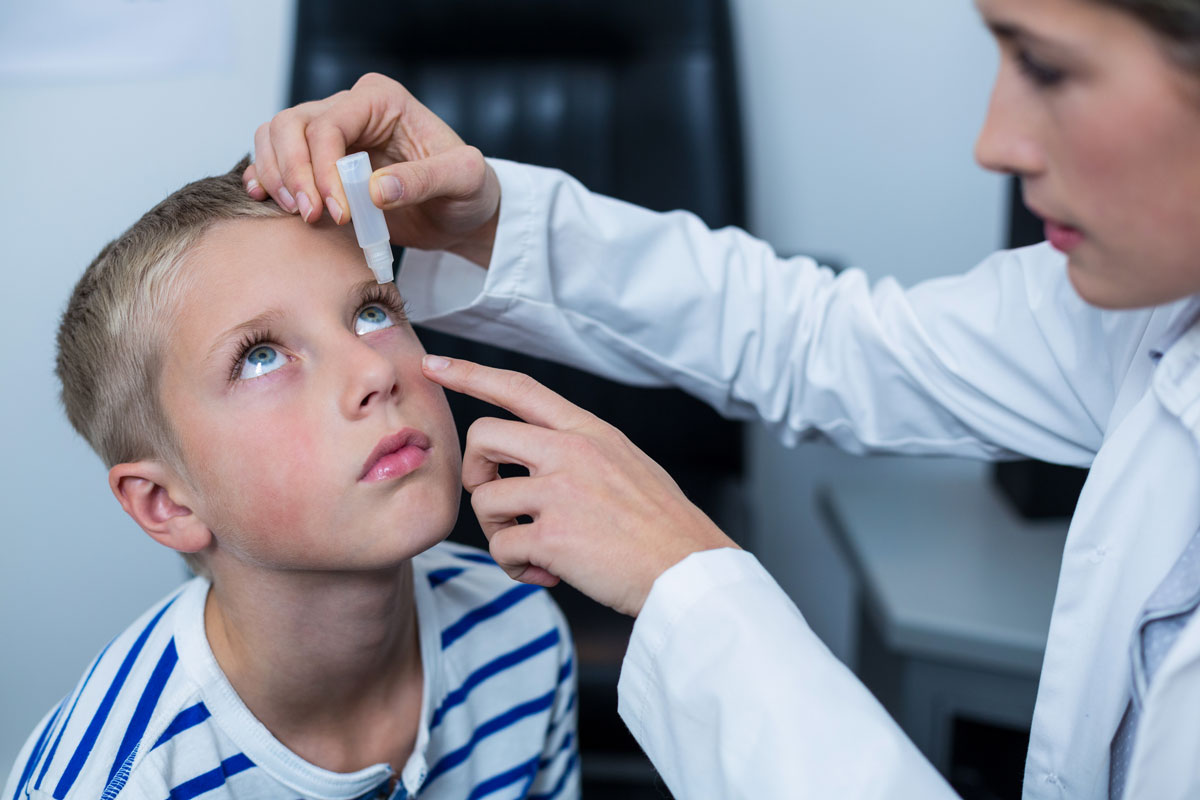 |
Between atropine and control groups, there were statistically significant differences in the cumulative changes in AL and SE over 12, 18, and 21 months. Photo: Getty Images. |
Atropine can effectively control the progression of myopia in children, but many debate the effectiveness and safety of the various concentrations available. A recent study conducted in China observed positive outcomes after a long-term treatment with 0.05% atropine drops.
The researchers co-enrolled and analyzed a total of 421 schoolchildren between the ages of six and 12 years old who had mild to moderate myopia, which they defined as objective spherical equivalence (SE) and binocular astigmatism between -1.00D to -6.00D, and astigmatism ≤1.50D. The cohort was divided into 212 in the atropine group and 209 in the placebo group. The cycloplegic SE, axial length (AL), corneal curvature (K) and anterior chamber depth (ACD) were measured using IOLMaster (Zeiss). The lens power and corneal astigmatism were also determined. The changes in ocular biometric parameters were compared between the two groups, and the contributions of ocular characteristics to SE progression were calculated and compared.
Over a 12-month period, the changes in SE were −0.03 and −0.32 in the atropine and placebo groups, respectively. The changes in AL were 0.06 and 0.17, respectively. At 18 and 24 months, there were significant differences in AL and SE between the atropine and placebo groups. Multiple regression models accounting for changes in AL, K and lens magnification explained 87.2% and 98.3% of SE changes in the atropine and placebo groups, respectively. At one year and two years, there were significant differences in photophobia between the atropine (n=63) and placebo (n=83) groups.
“Most of the previous LAMP and ATOM studies had a short follow-up period of one year, whereas our study had a follow-up period of two years, providing a new basis for studying the effect of low concentrations of atropine in the treatment of myopia,” the researchers wrote in their paper.
Nevertheless, the researchers noted that, although 0.05% atropine eye drops are effective after 24 months of use, the long-term effect is unclear. They also pointed out that further research is required to determine the optimal concentration of atropine and its suitability for younger students.
Zhang H, Yang P, Li Y, Zhang W, Li S. Effect of Low-concentration atropine eye drops in controlling the progression of myopia in children: a one- and two-year follow-up study. Ophthalmic Epidemiol. August 1, 2023. [Epub ahead of print]. |

